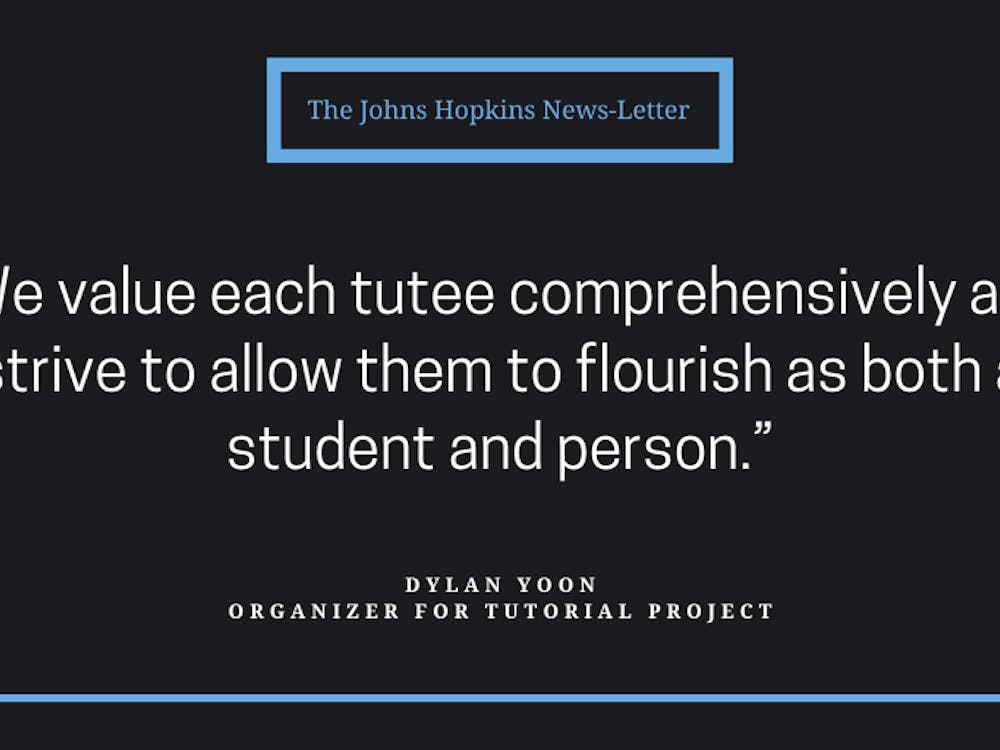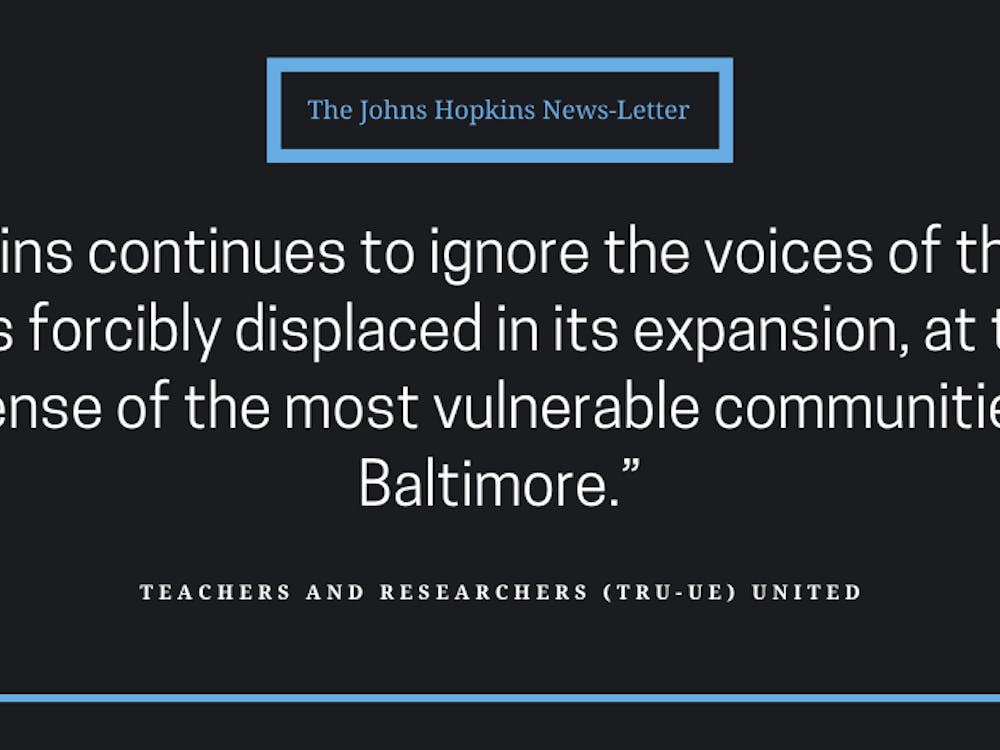Piper Harron, a temporary assistant professor in the department of Mathematics at the University of Hawaiʻi at Mānoa, spoke about diversity and inclusion in STEM on Friday.
The event was co-hosted by the undergraduate math club Ex Numera, Hopkins Feminists and the Inclusivity in Mathematics Project.
Harron earned her Ph.D. from Princeton University in 2016 and has garnered attention for highlighting the lack of diversity and inclusion in the mathematics field. She is also known for her thesis, which had an unusually conversational style of writing.
Harron began her talk by explaining how labels can cause others to make assumptions about a person, thus constraining that person to a certain category or stereotype. She introduced herself as a mother, mathematician and a revolutionary — all of which she deemed restrictive and uncomfortable.
“I’m uncomfortable presenting myself as a parent because I want others to see me as a human being with the same basic needs and concerns as everyone else,” she said. “Regarding being called a mathematician, I still assume mathematicians live and breathe math, although I live and breathe parenthood and justice.”
Harron then went on to challenge society’s perception of “being normal” and what that implies. According to her, society often perceives privileged groups of people as normal.
Those who do not fit in the normal category are easily marginalized, and their voices are often unheard or overshadowed by those who are “normal.”
When Harron first became pregnant, she began to notice how society treated her differently. Her friend told her about the symptoms she might encounter while pregnant.
Harron was also given lists with titles such as “Your pregnant body: 20 things they don’t tell you” and “Nine gross pregnancy secrets no one talks about to you.” She was also given a list of foods to avoid without in-depth information on why they should be avoided.
It made no sense to Harron why this information was not fully explained. Within 24 hours of being pregnant, she felt that others no longer considered her to be “normal.”
She realized how there were not only a lack of resources and information available, but the way that society and movies portrayed pregnancy was vastly different from what she experienced.
“Pregnant people deserve free choice and unbiased information. They deserve to be treated as though they are human beings capable of making decisions without coercion,” she said.
She stated how she started watching television and following the media more critically. Previously, she saw pop culture as a reflection of collective knowledge. However, by seeing the discrepancy between the media and reality, she felt that pop culture did not represent that knowledge.
“Being normal or dominant means not only are you ignorant about other people’s experiences, but you’re in a position to push that ignorance onto others,” she said. “Most female characters are written by men, so children who grow up will only perceive female characters as written by men. This is not natural.”
During her time at Princeton University, Harron said she felt ostracized by others who spoke in an exclusive and technical language she did not understand.
“I hated the idea of being pushed out of math because people didn’t understand who I was or what my needs were,” she said. “When one is not normal, they become an object of curiosity, subject to judgement and scrutiny by well-meaning people.”
In December 2015, Harron published her dissertation online. It quickly went viral in the math community because it was written in an unconventional, critical style.
“People shared it because math Ph.D. theses were supposed to be inaccessible, dry and in-depth, but mine was amusingly written and for the broader audience,” she said.
In particular, people shared the prologue of her dissertation which criticized the inherent sexism in math culture. Some people felt they could relate to her feelings of isolation and called her courageous.
Last May, Harron wrote a blog for American Mathematical Society in which she suggested certain people in power should “get out the way.” This resulted in a torrent of angry messages and emails which exposed her to racial and sexist slurs.
She became the target of alt-right smear campaigns and was deemed by some people as a highly controversial figure in mathematics.
As a result, she suffered from constant anxiety and dread that affected her body and health. However, that did not deter Harron from continuing to stand up for herself and express her beliefs. Harron stated that previously, she had avoided attracting any kind of attention and expressing any sort of opinion. She would have much preferred to be conventionally successful, living by other people’s standards and fitting in as being “normal.”
According to Harron, there were three choices she could have made: accept society’s rules, resist quietly or resist loudly. However, she said that trying to accept rules had cost her too much, and resisting quietly felt like she was still giving in to the rules of acceptability. Therefore, she chose to resist loudly.
“Sometimes leadership feels like you’re backed into a corner and have no options. Sometimes it feels exactly like failure. Sometimes leadership feels like having no idea of what you’re doing but struggling through it anyway,” she said.
At the end of the lecture, she highlighted what she wanted students who attended to take away.
“What I want for you is to work harder and to make the road safe for everyone — including my friends of color, transgender friends and disabled friends — so we can all focus on our works instead of fighting to exist,” she said.
Sarah D’Adamo, an instructor at the Carey Busisness School who attended the lecture, discussed how she felt about mathematics writing
“So often when we talk about academic labor, producing research or teaching, we get can get really technical with the ways that we talk about them,” she said.
Mira Wattal, a sophomore and co-founder of the Inclusivity in Mathematics Project, felt Harron’s talk was very relatable.
“I felt very isolated in high school from the mathematics community, but since coming to Hopkins I have met different kinds of people doing math and that gave me a new perspective on what the mathematics community could look like,” she said. “It made me feel a lot more comfortable.”
D’Adamo said interacting with Harron in person was a powerful experience that resonated with her more than reading her work online.
“There’s something really irreducible about actually listening to someone in their flesh, talking about these experiences which are emotional and effectively asking us to contribute to reproducing it,” she said.






















Please note All comments are eligible for publication in The News-Letter.